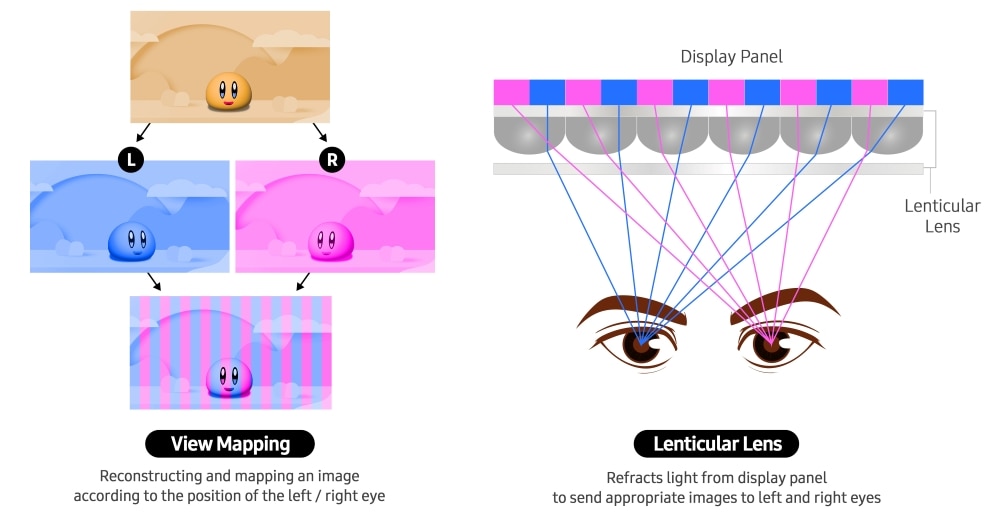Inside The Mind-Bending World Of Glasses-Free 3D Monitors: How The Tech Works
For decades, 3D displays promised immersive experiences but always came with a catch: the clunky glasses. Now, cutting-edge technology is finally delivering on the promise of 3D visuals without the eyewear. Leading this charge is the Odyssey 3D (G90XF) from Samsung, offering a glimpse into how glasses-free 3D monitors actually work.
The Science Behind Glasses-Free 3D
At the core of these next-gen monitors is a concept called binocular disparity. Our brains naturally perceive depth because each eye captures a slightly different image. Traditional 3D displays simulated this by showing two different images with the help of special glasses. The latest monitors, however, bypass the need for eyewear entirely by directly presenting unique images to each eye.

Take the Odyssey 3D, for example. It uses a combination of advanced eye-tracking, view mapping, and lenticular lens technology. A stereo camera, mounted atop the monitor, tracks the user’s eye movements in real time. "The two cameras capture different images, much like human eyes, they can determine the exact position of the user’s eyes and distance between the eyes and the monitor in real time. This real-time eye position detection allows Odyssey 3D to deliver a precise 3D image, even when the user moves."
How The Technology Works Together
Once the monitor knows exactly where your eyes are, it calculates the correct pixel positioning through a process called view mapping. "Based on this data, the system calculates the correct pixel positioning for each eye and reconstructs a single image through a process called view mapping." Finally, the lenticular lens comes into play, bending the light so that each eye receives only its intended image, creating a seamless 3D effect.
Interestingly, the lenticular lens isn’t always active. It only kicks in when 3D mode is turned on via the Odyssey 3D Hub. This allows the monitor to perform just as well during regular 2D gameplay, offering high-quality visuals and fast response times that gamers expect.
Tackling Crosstalk And Other Challenges
One of the persistent challenges in 3D technology has been crosstalk, where overlapping images cause eye strain and reduce clarity. The Odyssey 3D addresses this head-on with several innovations.
Samsung employs advanced techniques such as post-assembly calibration, hardware-specific data storage, and a deep learning-based eye-tracking algorithm. Additionally, a specially engineered display cell coating reduces light distortion and glare, further enhancing image clarity.
These enhancements ensure that users get a crisp, clear, and comfortable 3D experience without the headaches that earlier 3D technologies often induced.
A New Era For Gaming And Beyond
While gaming is the most immediate beneficiary of glasses-free 3D monitors, the potential applications stretch much further, from professional design to medical imaging and virtual collaboration. The Odyssey 3D serves as a compelling case study of what’s possible when advanced optics meet real-time computing power.
As the technology matures, the days of awkward 3D glasses may soon feel as outdated as dial-up internet, making room for truly immersive experiences that feel natural and effortless.
gaming